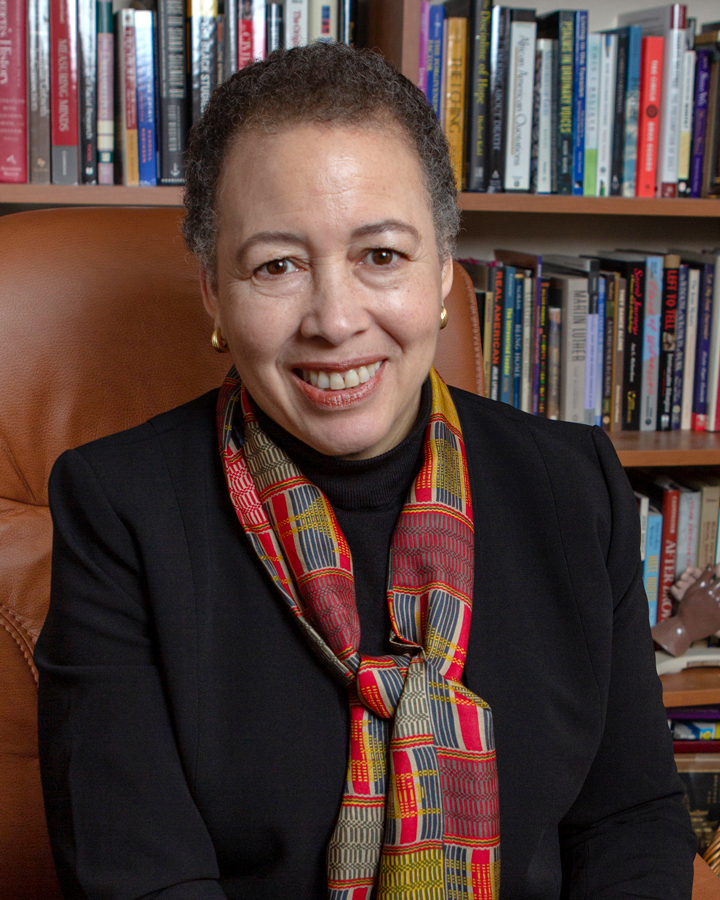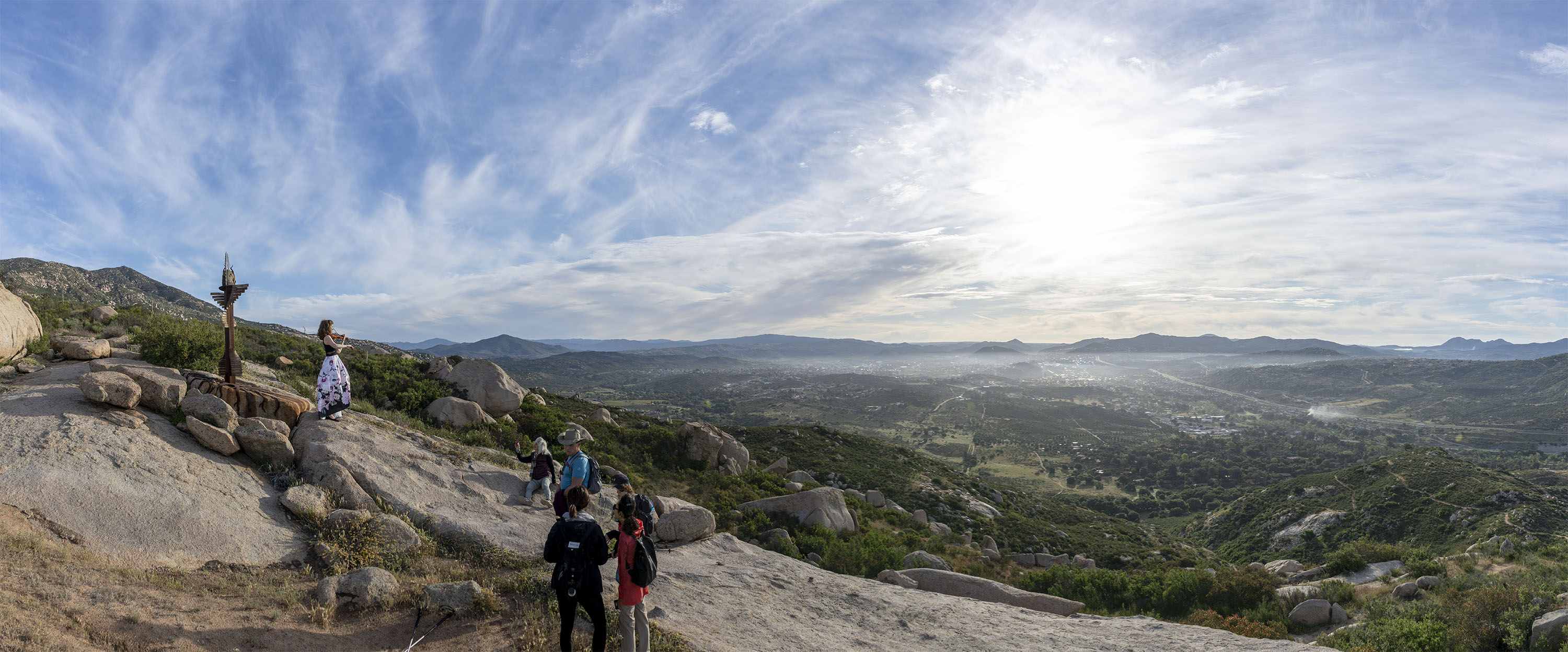Dr. Beverly Daniel Tatum on Race and Education

Dr. Beverly Daniel Tatum, president emerita of Spelman College, is the author of the best-selling book, Why Are All the Black Kids Sitting Together in the Cafeteria? And Other Conversations about Race, now in its 20th-anniversary edition. Dr. Tatum holds a B.A. degree in psychology from Wesleyan University, an M.A. and Ph.D. in clinical psychology from the University of Michigan, and an M.A. in Religious Studies from Hartford Seminary.
Dr. Beverly Daniel Tatum joined Rancho La Puerta’s Director of Guest Relations Barry Shingle for a live streaming discussion reflecting on race and education, which is edited and excerpted here.
Barry: Before we get started, in the last month or so, I think that what I’ve become aware of is what I’m not aware of. I’ve gone to advanced school for literally ten years. I have a master’s degree. I can’t believe how many things I didn’t know, and I wasn’t taught. One of the things that you did in your 20’s is you taught at UC Santa Barbara, a class about race, is that correct?
Beverly: That is correct. Yes.
Barry: Something that you said, that I’m going to use, is you called teaching [at UC Santa Barbara] “a powerful learning experience.” This is my hope, is that people in the United States are having a powerful learning experience right now. That is my hope. Let’s talk first about George Floyd’s murder. Why do you think this has really brought so much to the forefront?
Beverly: Well, I think that the recent uprisings associated with the murder of George Floyd were really triggered by two things. One was the video of George Floyd’s death at the knee of that police officer. It was eight minutes, 46 seconds. It wasn’t just a short snippet. It wasn’t fuzzy. It was perfectly clear. You could see very clearly what was happening. It was very clear that George Floyd wasn’t resisting; there was no threat to that police officer. There’s no way to justify what was happening.
Unlike some other situations that might have been more visually ambiguous, this was so clear, and it was so long and so horrifying, and people were at home and had plenty of time to watch. The fact that people seeing those images on their laptops, televisions, or hearing about it on the radio over and over and over again, and because the pandemic shut everything down, they were home and had time to go out in the streets and express their outrage, I think those two things combined, created a tipping point.
Of course, the death of George Floyd was not the only thing happening during that time period. I live in Georgia, where the murder of Ahmaud Arbery had happened. The video of his murder was released just shortly before the George Floyd incident. Breonna Taylor’s murder in Louisville, Kentucky [had also taken place]. The cumulative effect [of these tragedies] and the fact that people had time, led to a convergence of emotion and opportunity for people to speak up and step forward.
Barry: How important do you think it is for us to understand how we got to this point? I think that a lot of people are waking up and going, “Wow, where did this come from?”
Beverly: Well, I think it’s very important to know what the history is. That’s one of the things in the United States. You mentioned that you’re a well-educated person, and yet there’s a lot about the history of racism in the United States that you never learned.
When I started teaching my course on racism when I was 26 years old, at UC Santa Barbara, my students said, “Why did we have to wait until we were juniors or seniors in college to get any of this information?”
That was a common observation throughout my career. A lot of people just don’t know very much about the way racism has operated in our society. A lot of white people, in particular, haven’t learned that. If it’s not part of your own life experience, it’s maybe invisible, but yet we need to know it because, otherwise, you might just say, “Well, that police officer was just one bad apple,” as opposed to recognizing the pattern of police violence and racial violence more broadly, particularly against black people, but not only against black people in the United States. There’s a long history of that tracing back to the times of slavery.
Barry: When you speak of slavery, I first learned about slavery by watching Roots when I was in seventh grade. In some of your interviews, you’ve talked about how early our first thoughts of racism start, and as children, right?
Beverly: Yes, I have had the privilege of speaking to large groups of people in person. If you ask people what age they were, most people will remember something. If you ask them how old they were at the time of that incident, they will usually say five, six, seven, early elementary school years. It might’ve been something that happened on a playground or something somebody did or said, but most people will remember something.
If you ask them what emotion is attached to it, most people will express some feeling of discomfort; maybe it’s anger, or embarrassment, or shame, or guilt or sadness. There are all kinds of feelings people express, but for most people, it’s some feeling of discomfort. If you ask them, “Did you talk to anybody about it at the time that it occurred?” Most people will say they didn’t. They didn’t talk to a parent. They didn’t talk to a teacher.
That’s surprising if you think about the five, six, and seven-year-olds you know because they’re pretty chatty. Generally speaking, children don’t filter much, and yet you can talk to so many adults, not just white adults, people of color too, who will say, “This happened, and I didn’t talk to anyone about it.” I, in fact, maybe have never talked about it because we learn at a very early age in our society people don’t want to hear about it. We are socialized to be silent around issues of race and racism.
Barry: How important is it that we start talking about it in grade school?
Beverly: Well, I think it’s very important to start in grade school. One of the things we know is that even young children develop prejudices. Now, let’s just say you got a toddler at home. That two-year-old, that three-year-old is not necessarily a racist, they don’t have prejudicial attitudes, but even that two- or three-year-old is starting to internalize the racial hierarchy that is part of our race-conscious society. It might manifest in not wanting to play with the black doll, only wanting the white doll. It might manifest in terms of making observations.
I gave a TEDx talk, which you might have seen, Is My Skin Brown Because I Drank Chocolate Milk? The title comes from a conversation my then three-year-old son had with his white classmate. The classmate said, “Your skin is brown because you drank chocolate milk.” My son came home and asked me if that was true. Of course, it’s not, but I use it as an example that young children are noticing differences, they comment on it. As they get older, they start to understand the values that are attached. They start to understand that dark skin is not as valued as lighter skin.
They might even just start to discriminate. You will hear on the playground, a kid saying, “You can’t play with us in this dress-up corner. You can’t play with this game because you don’t belong in this way.” Those kinds of comments may not be coming from the parents. It might just even be coming from what I call the smog. The stereotypes, the images that we see on television, the comments we hear people making as we are growing up. It’s like smog in the air, and we are internalizing those messages all the time.
I like to say, if you breathe in a lot of smog, don’t be surprised if sometimes you breathe some out. We all are part of this process of socialization, but it obviously has a differential impact if you’re the target of somebody’s bias than if you are not.
Barry: Wayne Dyer has an analogy about an orange. If you squeeze an orange, what will come out? Only orange juice. Whatever you put inside of you is going to come back out in some shape or form. We have a lot of images and things that our society teaches us, that we’re not even aware of, that we learn along the way.
Beverly: One of the things you said, if you squeeze the orange, only orange juice is going to come out – what you put in is what’s going to come out. Sometimes what parents struggle with is they think if I don’t put anything in, there won’t be anything in there. If I don’t talk about “it,” if I don’t say anything, my child won’t have any of that in her or him, but the reality is there are lots of other sources. If you are not putting in your values, your beliefs, if you’re not talking about these things, your kids are going to be vulnerable to having somebody else fill them up with that stuff.
See the entire conversation and view other Chats With Barry.


